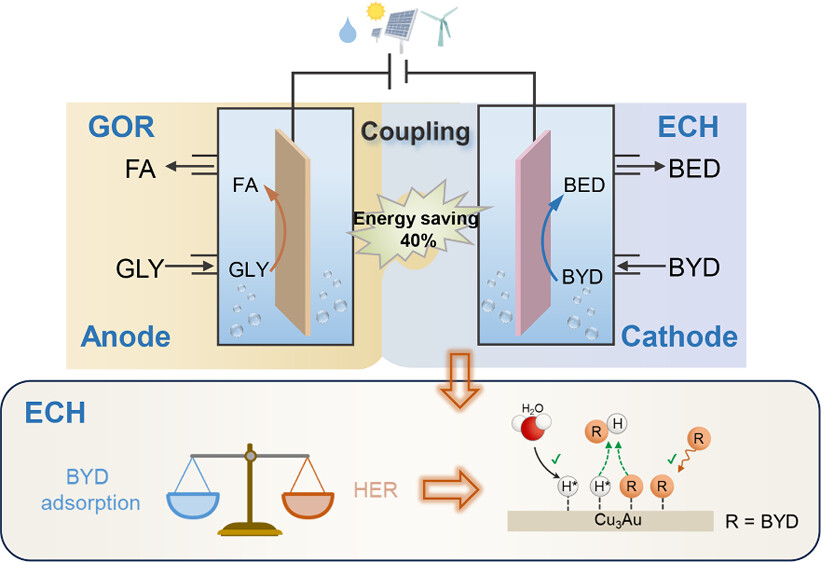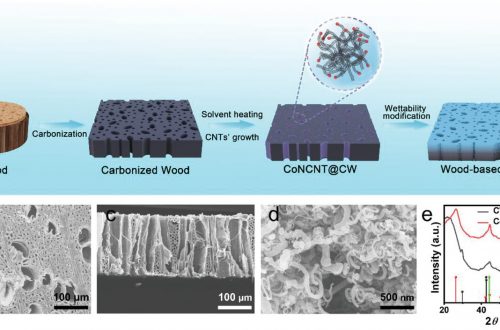68. Steering Selectivity in Electrocatalytic Furfural Reduction via Electrode−Electrolyte Interface Modification
Kaiyue Ji, Yuanbo Liu, Ye Wang, Kejian Kong, Jing Li, Xiang Liu, and Haohong Duan*
J. Am. Chem. Soc. 2024, 146, 17, 11876–11886.
DOI: 10.1021/jacs.4c00818

Abstract
Electrocatalytic reduction of biomass-derived furfural (FF) represents a sustainable route to produce furfuryl alcohol (FA) and 2-methylfuran (MF) as a value-added chemical and a biofuel, respectively. However, achieving high selectivity for MF as well as tuning the selectivity between FA and MF within one reaction system remain challenging. Herein, we have reported an electrode–electrolyte interface modification strategy, enabling FA and MF selectivity steering under the same reaction conditions. Specifically, by modifying copper (Cu) electrocatalysts with butyl trimethylammonium bromide (BTAB), we achieved a dramatic shift in selectivity from producing FA (selectivity: 83.8%; Faradaic efficiency, FE: 68.9%) to MF (selectivity: 80.1%; FE: 74.8%). We demonstrated that BTAB adsorption over Cu modulates the electrical double layer (EDL) structure, which repels interfacial water and weakens the hydrogen-bond (H-bond) network for proton transfer, thus impeding FF-to-FA conversion by suppression of the hydrogen atom transfer (HAT) process. On the contrary, FF-to-MF conversion was less affected. This work shows the potential of engineering of the electrode–electrolyte interface for selectivity control in electrocatalysis.



